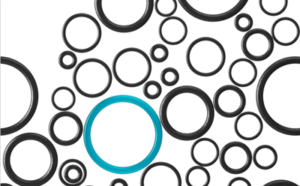Datwyler expands O-ring production to North America and Asia
Schattdorf, Switzerland – Datwyler is further enhancing its global capabilities in O-ring development and production with the transfer of its state-of-the-art cold runner injection molding technology to Asia and North America. Demand for O-rings has increased as new mobility solutions have evolved. New applications in areas such as hydrogen storage in fuel cell development, thermal management of batteries and power electronics, and sealing solutions for components such as battery covers and inverter modules, demand attention.
Surface treatments, enhanced cleanliness in production, temperature resistance and resistance to various different media and environments are critical points of focus. The technology transfer to sites in China and North America will further enhance supply chain security for Datwyler’s customers globally, as well as providing a local-for-local service that will ultimately reduce logistical demands and associated carbon emissions.
“O-rings require a local production footprint as our customers are looking for more supply chain security, particularly after the pandemic,” said Richard Katona, Key Account Manager at Datwyler. “Equipping our sites in Asia and North America with this technology ensures there is consistency of supply that can be reinforced by other global sites if required. In addition, as skilled labor shortages continue to be an issue, the high level of automation associated with the process takes further pressure away from the production element, delivering high quality product with high efficiency and minimum waste.”
With the injection molding process, there are clearly defined cavities to fill, and tooling can be enlarged to provide more cavities and therefore more parts per run. This efficiency is further enhanced by the cold runner technology, which controls the temperature of the compound and keeps it at a low viscosity – making it easier to produce parts with precision. The cold runner technology is an evolution of the traditional injection molding process and is a highly automated alternative to traditional compression molding, where pre-formed material is used to fill a cavity, creating high levels of manual input.
“Within the cold runner the compound can be injected in different areas of the tool, as opposed to a single central area,” continued Richard Katona. “Different injection points mean greater precision and control over the finished product, which ultimately drives waste out of the process. Further, as we engineer everything in-house, including molding and the production of tooling, we can meet the specific product tolerances required from our customers with the minimum number of correction loops. This feeds into our commitment to delivering operational excellence wherever our customers are located, and ensures that parts produced across our manufacturing facilities will be identical and of the same high quality.”
These technology transfers are expected to be completed by early 2023.

